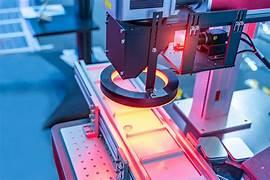Introduction: The Rise of AI-Driven Visual Quality Assessment
AI Vision Inspection systems are transforming quality control processes across industries by combining machine learning with computer vision technologies. These systems replicate human-like visual capabilities and enhance them with speed, accuracy, and consistency that surpass traditional manual inspection methods. By using high-resolution cameras, edge computing, and advanced AI models, AI vision inspection systems detect defects, anomalies, and irregularities in products with precision in real time.
The adoption of these systems is gaining momentum in manufacturing, electronics, automotive, pharmaceuticals, food processing, and logistics due to increasing demands for higher quality standards, cost reduction, and process automation. Ai vision inspection market is projected to grow to USD 196.53 billion by 2034, exhibiting a compound annual growth rate (CAGR) of 22.50% during 2025-2034.
Understanding AI Vision Inspection Technology
AI vision inspection leverages artificial intelligence to analyze images or video feeds from industrial cameras, identify defects or quality issues, and make real-time decisions. These systems typically use deep learning algorithms trained on large datasets of images to recognize subtle defects that would otherwise be missed by traditional rule-based vision systems. AI enables the system to learn continuously from new image data, improving accuracy and adaptability over time.
The core technologies include convolutional neural networks (CNNs), image segmentation, anomaly detection, and edge inference. Many platforms also incorporate cloud connectivity for centralized data management and analytics, enabling manufacturers to monitor quality trends and optimize operations across facilities.
Industry Applications: Where AI Vision Inspection Makes an Impact
AI vision inspection is widely applied in industries where precision and consistency are critical. In electronics manufacturing, it is used for inspecting solder joints, printed circuit boards (PCBs), and microchips to detect microscopic flaws. In the automotive sector, vision systems inspect engine parts, metal surfaces, paint finish, and assembly alignment to prevent safety hazards.
The pharmaceutical industry uses AI vision inspection to ensure packaging integrity, label verification, and tablet counting with minimal error. Food processing companies rely on vision inspection for sorting, grading, and packaging food items based on size, shape, and quality. In logistics and warehousing, AI vision aids in barcode recognition, package tracking, and damage detection, enhancing supply chain efficiency.
Key Market Players Leading the AI Vision Inspection Ecosystem
Several technology providers are spearheading the development and deployment of AI vision inspection systems. Companies such as Cognex Corporation, Keyence Corporation, Teledyne FLIR, Basler AG, Omron Corporation, and Datalogic have been pioneers in industrial vision technology.
These companies offer AI-powered systems with embedded deep learning, real-time image processing, and intuitive user interfaces. Emerging players like Landing AI, Neurala, and Instrumental are also gaining ground by offering flexible, cloud-native AI inspection platforms tailored for small and medium manufacturers. Many of these solutions are compatible with existing factory hardware and offer APIs for integration with MES and ERP systems, making adoption smoother and more cost-effective.
Market Dynamics: Drivers Fueling the Growth of AI Vision Inspection
Several factors are driving the increasing adoption of AI vision inspection across global industries. The growing demand for zero-defect manufacturing, heightened regulatory compliance, and the need to reduce production costs are key motivators. Traditional vision systems often rely on static rules, which can fail when faced with product variability. In contrast, AI systems adapt to new patterns and learn from production variations, reducing false positives and inspection errors.
Additionally, labor shortages and the rising cost of skilled inspectors are pushing industries toward automation. The integration of Industry 4.0 principles and smart factory initiatives further amplifies the demand for intelligent visual inspection technologies.
Technological Advancements Enhancing AI Vision Systems
AI vision inspection systems are rapidly evolving, incorporating cutting-edge technologies that improve performance and scalability. One major advancement is the integration of edge AI processing, which allows real-time analysis directly on inspection devices, reducing latency and data transfer needs.
Enhanced imaging sensors with 3D vision and hyperspectral capabilities are now being used to capture more detailed visual data for accurate inspection. Transfer learning and federated learning models are being applied to reduce training time and enable decentralized AI updates across factory lines. Additionally, augmented reality (AR) is being explored to overlay inspection feedback directly onto production equipment for guided rework.
Recent Developments and Strategic Initiatives in the Market
Recent developments in the AI vision inspection market highlight growing investments and partnerships among technology vendors and industrial manufacturers. Companies are introducing pre-trained model libraries for specific use cases like weld inspection, textile defect detection, or label verification, enabling faster deployment.
Many platforms now offer cloud dashboards for remote monitoring of inspection performance and defect trends across facilities. Strategic partnerships are forming between AI companies and camera or sensor manufacturers to develop plug-and-play solutions. Regulatory bodies are also beginning to recognize AI-based inspection as a validated process in pharmaceuticals and food safety, opening doors to broader industrial acceptance.
Regional Trends and Adoption Across Global Markets
AI vision inspection systems are being adopted at varying paces across regions. North America leads in deployment, especially in automotive and electronics sectors, driven by high automation levels and stringent quality control standards. Europe follows closely, with Germany, France, and the UK emphasizing smart manufacturing initiatives and precision engineering.
The Asia-Pacific region is witnessing the fastest growth, fueled by booming manufacturing hubs in China, Japan, South Korea, and India. These countries are heavily investing in industrial AI to meet international quality benchmarks and scale production. Latin America and the Middle East are emerging markets, where AI vision inspection is gaining traction in food, packaging, and textiles as part of broader industrial modernization efforts.
